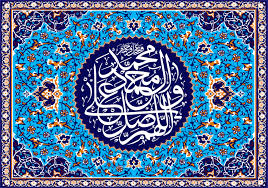seven colors #2 #4
It is made from the combination of fine glazed clays, each of which includes a part of the overall design, and from the fifth lunar century, with the expansion and progress of other branches of Islamic art, tiling also gained more progress.
Safavid mosques and schools are generally decorated with a covering of tiles inside and outside the building. While the use of mosaic tiles continued, Shah Abbas, who was impatient to see his unfinished religious buildings, encouraged more use of the rapid seven-color tile technique. In the Safavid era, seven-color tiles were widely used in the palaces of Isfahan, and the installation of square tiles in large frames created novel scenes with figures and different characters. In the 12th century of Hijri, with The advent of Zandiye building construction resumed in ambitious sizes, especially in Shiraz, the capital of Zandians, and for this reason, a new movement in the tile industry emerged. In this age, the images of the tiles are painted with a new type of pink color that was also used during the Qajar rule.












